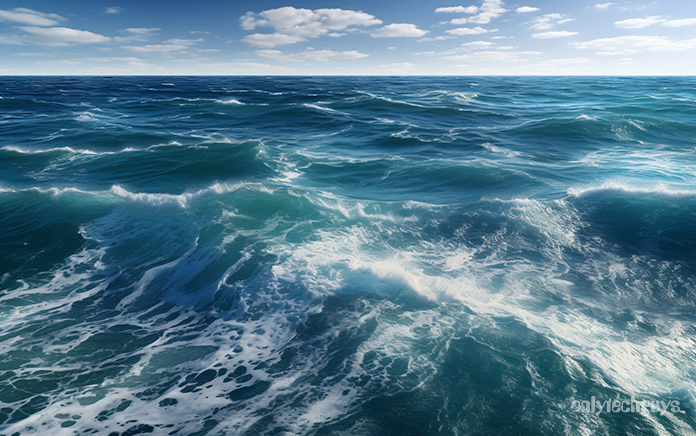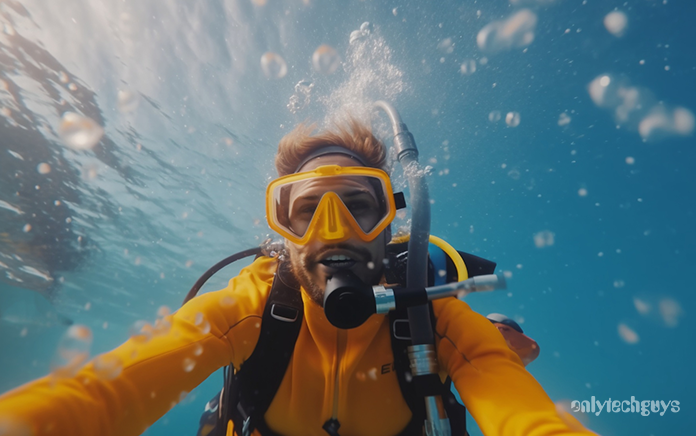AI sea rescue is the next big step that is being deployed in the field of maritime safety.
In today’s day and age, with advancements in the field of technology, artificial intelligence or AI has become a game changer in numerous fields.
AI sea rescue is an area where the advancement of artificial intelligence has a lot of potential to promise and deliver.
Every year, thousands of human lives are risked because of maritime accidents, natural disasters or other emergencies that take place at the sea.
In vast and remote oceanic regions, the traditional search and rescue (SAR) methods are faced with many challenges especially in efficiently locating as well as assisting distressed vessels.
As a result, AI sea rescue with the integration of AI systems as well as autonomous lifeboats looks like the need of the foreseeable future.
This blog will throw some light on the present as well as the future of AI sea rescue.

AI Sea Rescue – Search And Rescue AI
To increase the effectiveness of search and research operations at sea, deployment of AI sea rescue that involves AI-powered algorithms has become the need of the hour.
By analyzing satellite imagery as well as other data sources, the AI search rescue algorithms can quickly identify vessels that are in distress.
After identifying the distressed vessels, rescue efforts can be prioritized based on numerous factors like location, severity of distress signals as well as prevailing weather conditions.
AI systems have an advantage over human operators as they can process vast volumes of data quickly which enables faster response times that lead to the potential saving of many lives.
Offshore Deckhand
If AI Sea Rescue comes into action, you can expect autonomous lifeboats that are equipped with sophisticated AI systems to act as offshore deckhands.
The autonomous lifeboats can patrol the seas tirelessly and respond to every distress call with more efficiency as well as precision.
The AI-controlled vessels will help in sea rescue by navigating through rough waters, locating distressed vessels with the help of advanced sensor technology and then autonomously deploying rescue equipment.
By reducing the intervention of humans in high-risk SAR missions by deploying AI Sea Rescue, there can be significant improvement in the safety of rescue operations while increasing the overall chances of successful outcomes.
Sea.AI
Sea.AI includes numerous AI technologies that are specifically tailored for maritime applications like autonomous vessels and underwater drones as well as predictive analytics representing a new era of innovation in maritime operations.
With the ultimate goal of improving maritime safety as well as efficiency across the world researchers, engineers as well as maritime authorities are driving the development and deployment of Sea.AI solutions.
Ocean Spray Jobs

With the deployment of AI Sea Rescue maritime safety will be greatly improved but it does raise concerns regarding its impact on traditional maritime roles.
With the increased deployment of autonomous AI technology systems, there is a valid and increased fear of job displacement in the maritime industry.
It should not be overlooked that in addition to improving maritime safety, AI technologies also create new job opportunities in the field of AI development, maintenance as well as oversight of autonomous maritime systems.
To ensure a smooth transition towards an AI-driven future of maritime operations while addressing the challenges of job displacement, individuals must take measures like upskilling as well as participate in retaining programs.
Vision Rescue
AI Sea Rescue can only be possible with computer vision technology that plays a crucial role in augmenting sea rescue operations.
The augmentation of the sea rescue operations is done by providing real-time analysis of visual data that is provided with the help of drones, satellites as well as onboard cameras.
Additionally, AI technology can recognize many other distress signs like smoke, flares or even overturned vessels with a high rate of accuracy which enables early detection and swift response.
AI Sea Rescue with its advanced technology helps to monitor vast oceanic regions continuously. Due to such surveillance potential emergencies can be identified before they can escalate further improving the efficiency as well as the effectiveness of a SAR mission.
Lifeboat Rescue

AI Sea Rescue is incomplete without autonomous lifeboats that are equipped with AI vision systems.
The advanced vessels can navigate effectively through challenging conditions such as high waves and low visibility with ease owing to numerous sensors and onboard cameras.
By deploying AI-driven technologies in lifeboats, they can autonomously locate as well as assist distressed vessels while efficiently reducing response time as well as completing successful rescues and saving numerous human lives as well as infrastructure worth millions of dollars.
Conclusion
AI Sea Rescue is undoubtedly the future of maritime safety with autonomous lifeboats and AI-driven technologies.
With the integration of AI with maritime safety, we can not only reduce response time to distressed vessels effectively but also save numerous lives!




